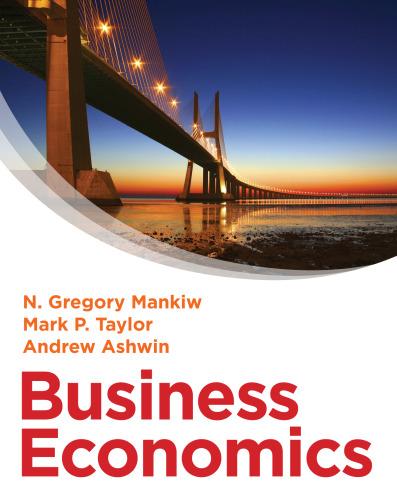10. Many schemes for price discriminating involve some cost. For example, discount coupons take up time and...
Question:
10. Many schemes for price discriminating involve some cost. For example, discount coupons take up time and resources from both the buyer and the seller. This question considers the implications of costly price discrimination. To keep things simple, let’s assume that our monopolist’s production costs are simply proportional to output, so that average total cost and marginal cost are constant and equal to each other.
a. Draw the cost, demand and marginal revenue curves for the monopolist. Show the price the monopolist would charge without price discrimination.
b. In your diagram, mark the area equal to the monopolist’s profit and call it X. Mark the area equal to consumer surplus and call it Y. Mark the area equal to the deadweight loss and call it Z.
c. Now suppose that the monopolist can perfectly price discriminate. What is the monopolist’s profit? (Give your answer in terms of X, Y and Z.)
d. What is the change in the monopolist’s profit from price discrimination? What is the change in total surplus from price discrimination? Which change is larger? Explain.
(Give your answer in terms of X, Y and Z.)
e. Now suppose that there is some cost of price discrimination.
To model this cost, let’s assume that the monopolist has to pay a fixed cost C in order to price discriminate. How would a monopolist make the decision whether to pay this fixed cost? (Give your answer in terms of X, Y, Z and C.)
f. How would a benevolent social planner, who cares about total surplus, decide whether the monopolist should price discriminate? (Give your answer in terms of X, Y, Z and C.)
g. Compare your answers to parts
(e) and (f). How does the monopolist’s incentive to price discriminate differ from the social planner’s? Is it possible that the monopolist will price discriminate even though it is not socially desirable?
Step by Step Answer:

Business Economics
ISBN: 388402
2nd Edition
Authors: Mark P. Taylor, Andrew Ashwin, N. Gregory Mankiw






